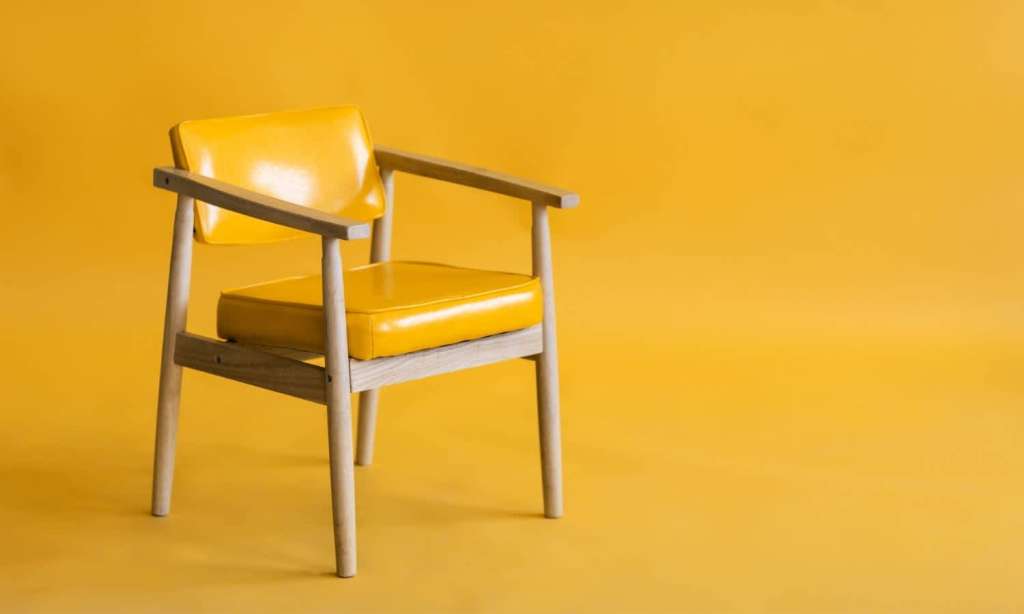It wasn’t that long ago that we bought furniture to last. Embedded in our homes for decades, tables and chairs were viewed as long-term investments, potential heirlooms to be passed down through generations.
But, like with the surge of fast fashion, the last few years have seen our relationship with furniture change. While adopting a new style every week can seem harmless, fast furniture has a huge cost. Not only are we rapidly depleting our planet’s natural resources, but we’re also creating a huge waste problem.
While we aren’t suggesting you cut out buying fast furniture completely – there will always be a time and place for it, like when you can’t afford to buy more expensive or are only wanting furnishings for a short amount of time — we are saying you should consider a few things before you do.
Ahead, Terry Lin, Co-Founder and Chief Design Officer at outdoor furniture company Outer, shares three questions to ask yourself and to think about before you do buy fast furniture. These will not only help you make better choices for your wallet, but also for the planet and peace of mind.
How Quickly Will This Furniture’s Trend Date?
As you know, fast furniture is produced in the express lane. Each year, the equivalent of 800,000 three-seat sofas or 6 million chairs are thrown away, with wealthy nations creating additional GHG emissions by shipping their waste to less-developed nations.
And a major factor contributing to this is ‘seasonality’ in furniture, which has seen a huge increase. Furniture trends are coming and going at a faster rate, with last year’s pieces (or even last month’s) ending up in landfill while we look to the next new trend in decor.
And while, again, there is a time and place for trend pieces, if you can afford to buy what’ll last and you’re planning to keep it for years, look for something timeless in a classic colour or style that can grow with you and your lifestyle.
How Long Will The Piece’s Materials Last?
Not all wood is created equal. In trying to innovate in the home furnishing space, many manufacturers are completely removing what furniture is made of.
That’s why today a lot of fast furniture is “hollow box construction” which comprises a chipboard structure covered in laminate or veneer. While these flatpacks can seem like a steal, they are susceptible to peeling, swelling and rotting. Similarly, cheap fabrics are open to damage from the sun, stains and mould, significantly reducing the time you get to enjoy your new purchase.
So, before buying something “for now”, consider your location and climate, and then invest in furniture made from materials that’ll last.
What Is the Furniture Company Doing for the Environment?
Before it lands on the shop floor, each product comes with an entire life cycle, so it’s important to understand exactly what ‘baggage’ — from processes, materials to impacts — you’re buying into.
Fast furniture exploits natural resources, precious minerals, forestry products, and metal. To minimise cost, companies often begin the product life cycle with unsustainable or illegal logging, followed by energy-intensive milling and production, and the use of harmful chemical treatments.
Look for companies that use sustainably-made and recycled materials and eco-friendly manufacturing practices, and that donate part of their revenue to organisations such as 1% for the Planet, or hold a Climate Neutral certification. At Outer, we’ve diverted millions of plastic water bottles from landfills and waterways to create our sofas and rugs.
The Takeaway
When it comes to making more sustainable life choices, it’s all about taking baby steps. Consistently making better choices makes a bigger impact than selective choices.
By focusing on opting out of fast furniture and focusing on quality, you are doing your part in reducing your own carbon footprint by keeping products out of landfill for longer. Businesses also have a role to play by embedding sustainability across their supply chain and not being constrained by the status quo – from sourcing environmentally responsible materials, to establishing socially conscious manufacturing processes, to thinking of innovative ways to minimise carbon emissions and waste.
Ultimately, climate change is a global issue and it requires a global response – we can make a difference, one bedside table or sofa at a time.
Read more stories from The Latch and subscribe to our email newsletter.







